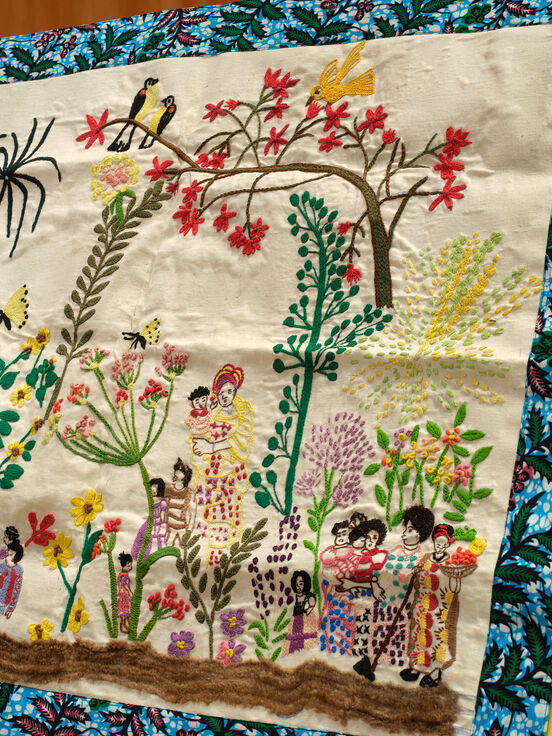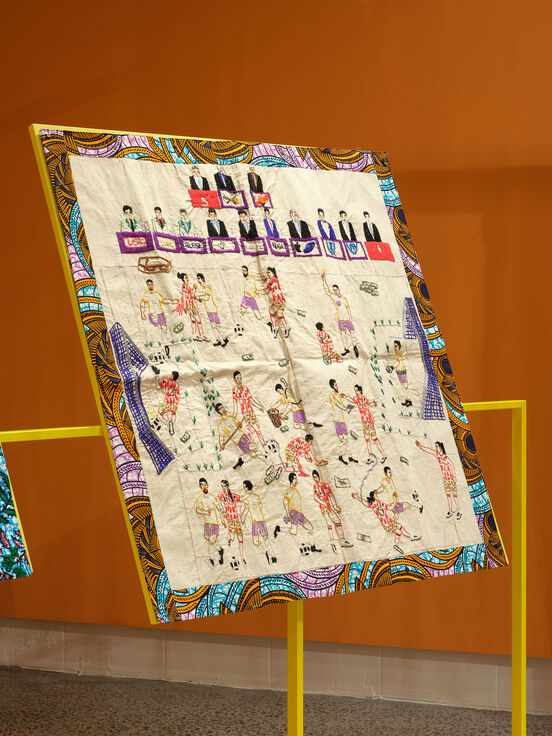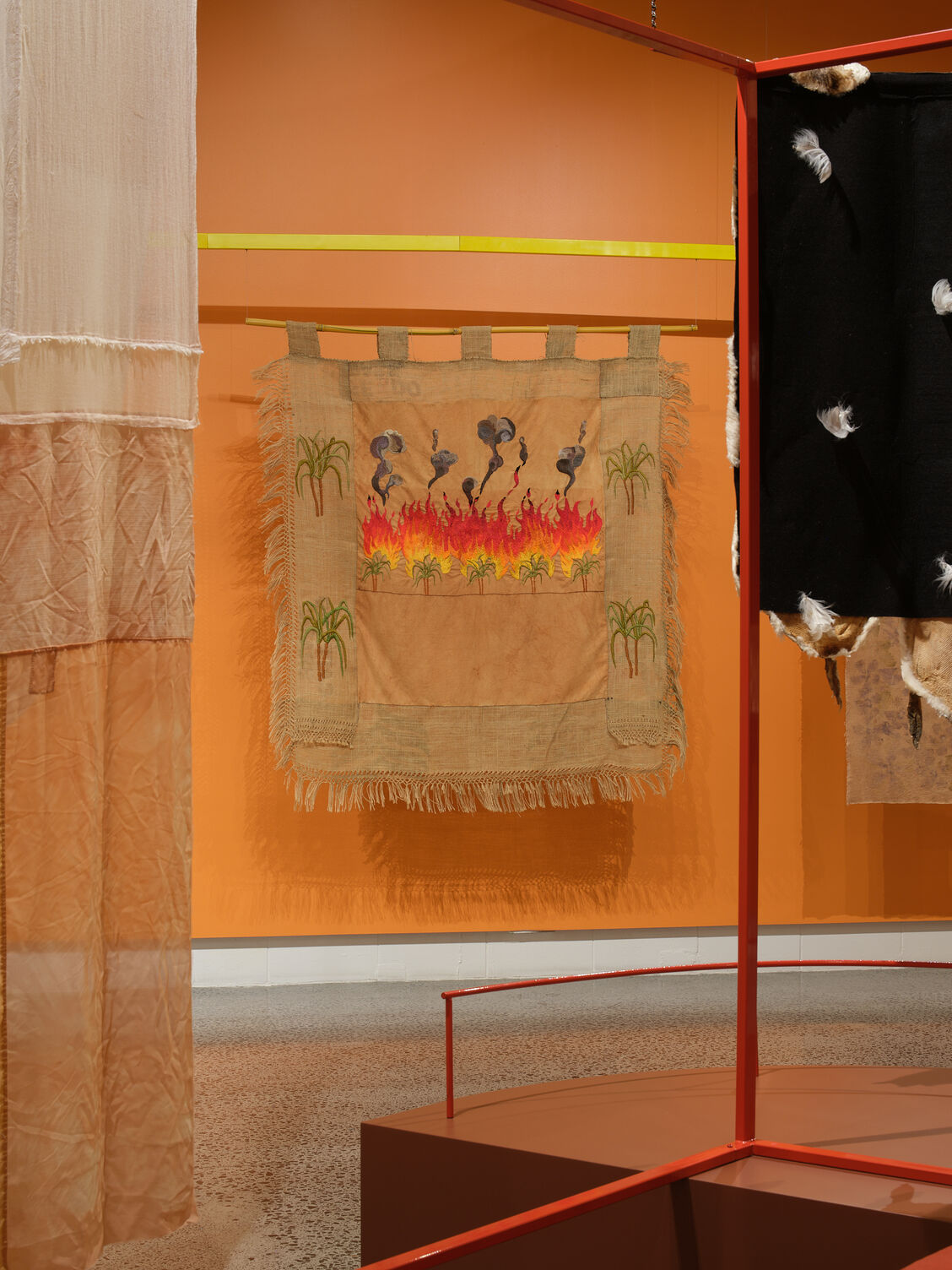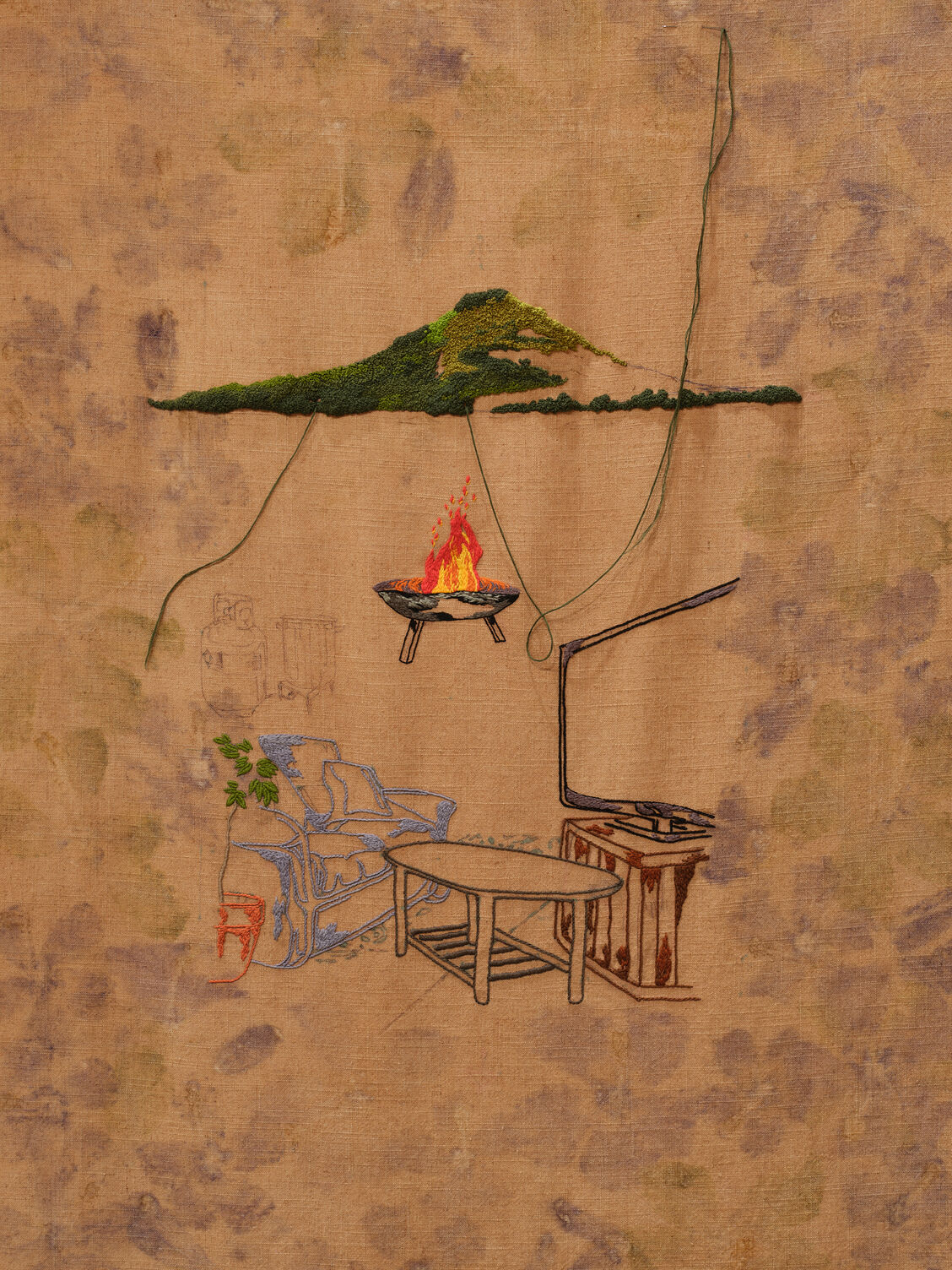Join curator Melanie Tangaere Baldwin and artists from PUPURITIA to hear the stories furled in their exhibiting textile works. Following an introduction by Melanie, artists Lema Shamamba and Quishile Charan will each speak to their works in the exhibition.
—
Melanie Tangaere Baldwin (Ngāti Porou) is a māmā, artist and curator based in Tūranga Nui a Kiwa Gisborne. Her work is largely focused on Mana Wāhine, Indigenous and marginalised peoples, and the effects of capitalism, imperialism and settler colonialism on notions of power, visibility, beauty and worth. She is interested in expressing the necessity of connection, whānau, and community through her mahi. Tangaere Baldwin has always considered textiles in the context of whānau, storytelling and beauty, whether it be the intensively woven wharenui Rakaitemania at Te Horo Marae in the Waiapu valley, her parents collections of southern African wall hangings and Pakistani rugs, the cherished box of her nanny’s unfinished tāniko, her Grandma’s sewing machine in the hallway, or the animal print mink blankets that wrap her and her cousins when they lie around watching TV.
Lema Shamamba was born and raised in Bweremana, a district of Masisi in the eastern territory of the Democratic Republic of Congo. Her family is Hunde, the Indigenous people of Masisi district. She came to Aotearoa as a refugee in 2009. In her local community in West Auckland, she is known affectionately as ‘Mama Lema’ and has worked closely with the Ranui Action Centre to reduce the isolation that refugee migrant families often experience. In 2014, Shamamba established the group Women of Hope that connects migrant women by coordinating activities in the community.
Indo-Fijian craft and social practitioner, researcher, writer and critical theorist Quishile Charan approaches craft as a science-fiction practice of building new worlds from the seeds of reality. As a descendent of Girmit (indentured labour) – part of a history and present in which autonomy was/continues to be denied by her people – Quishile holds close a core set of anarchist – anti-colonial, anti-institution, anti-authority – values. In her experimental, relational pursuits, Quishile expresses these values while seeking to form different visions of home with her own hands. Melted into Indo-Fijian gardening, cooking and living, it’s a family effort that prioritises the anti-colonial work of nurturing and caring for each other outside of Western hegemony. Quishile’s practice cannot function without the people in her life. A lot of her work lies in these relationships – choosing her family, holding them in the fabric of community and moving beyond historical systems of harm. Quishile holds a Master of Visual Arts from Auckland University of Technology Te Wānanga Aronui o Tāmaki Makau Rau, where she also completed a PhD in visual arts. She has exhibited at institutions including Artspace Aotearoa, Tāmaki Makaurau Auckland; SAVVY Contemporary, Berlin; and Kunsthalle Wien Museum. You can find Quishile working at her whare/ghar, which she shares with her chosen family in Aotearoa, making tarkari for loved ones, deep in talanoa while tending to her dye pots and sewing in the garage.

Lema Shamamba, Hope, 2024, photograph by Samuel Hartnett

Lema Shamamba, Soccer, 2024, photograph by Sam Hartnett

